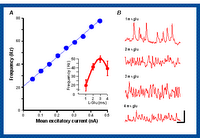Portable QEEG Helps Manage Depression Tx
Scientists measured brain activity before the patient was on any medication and then again one week after starting the popular antidepressant escitalopram, which targets a chemical messenger called serotonin. The patients were then randomly assigned to one of three groups: one group continued on escitalopram alone; one group was switched to another common antidepressant, bupropion, which acts on the chemical messengers norepinephrine and dopamine; and the third group took both medications.Another added benefit may be the ability to identify patients who may not benefit from drug treatment at all. Such persons could then skip the wasted months of time and expense of unnecessary drug treatment, and go directly to other therapies that are more likely to work.
To predict which patients would respond to escitalopram, the researchers looked for particular changes in brainwave patterns between the first and second QEEG. Using an algorithm that considers various QEEG characteristics, called the antidepressant treatment response (ATR) index, the researchers found that they could accurately predict whether the patient would respond to the escitalopram 74 percent of the time. Leuchter says that's much better than any other method currently available.
Earlier research had shown that the ATR index was relatively accurate at predicting a patient's response to escitalopram. But this study went further, by determining that the biomarker could also be used to determine whether a patient would benefit by switching to another drug. "This is the first study that I am aware of that can predict differential response to two different medications," Leuchter says. The research was published this month in the journal Psychiatry Research. _TechnologyReview
QEEG and other encephalographic methods have proven invaluable in the diagnosis and neurofeedback treatments of various neurologic diseases, including ADHD and traumatic brain injury. Now, it seems that EEG can be used as an integral part of treatment for depression and some types of schizophrenia.
The portability of the new devices -- such as the one used by the researchers above -- allows for their use in smaller clinics. Traveling therapists will eventually be able to take the equipment with them to remote areas and disaster sites.
Seeing into the brain is a necessary step to allow useful therapeutic intervention.
Labels: depression, EEG, neurofeedback





